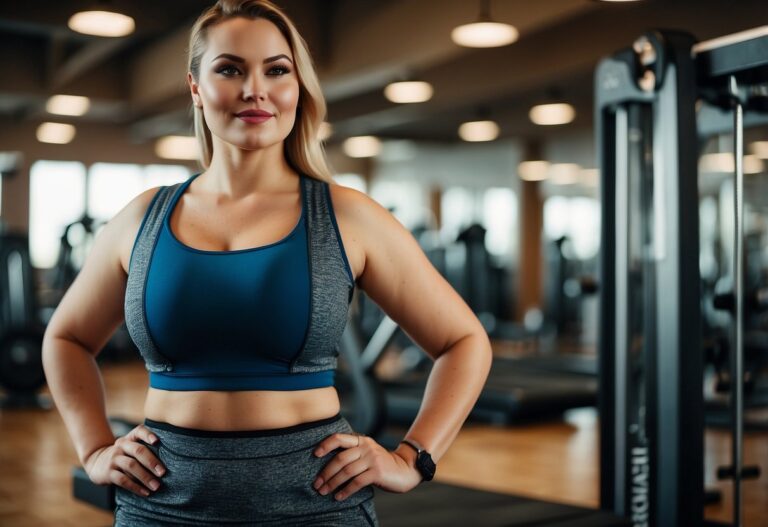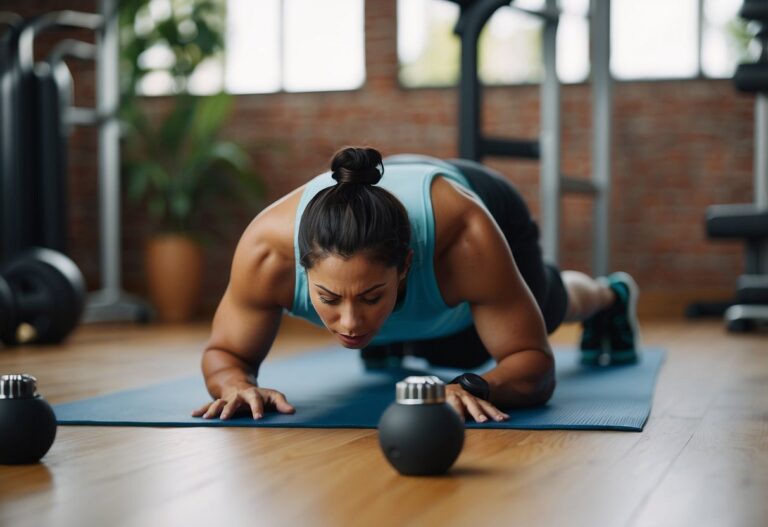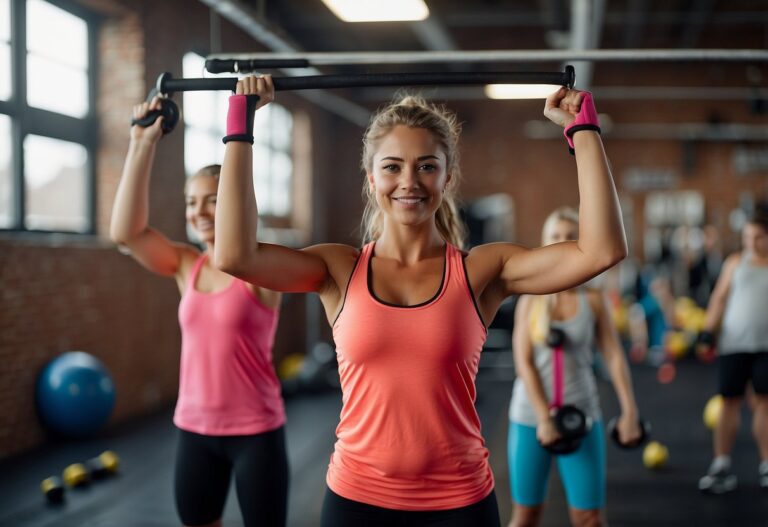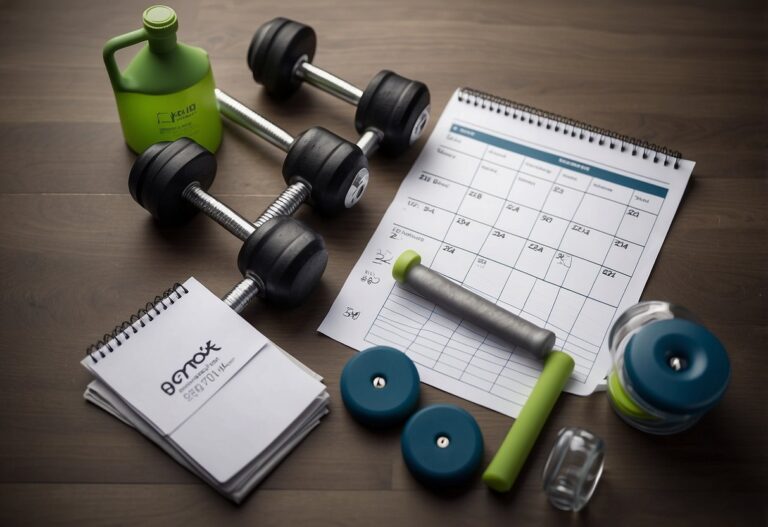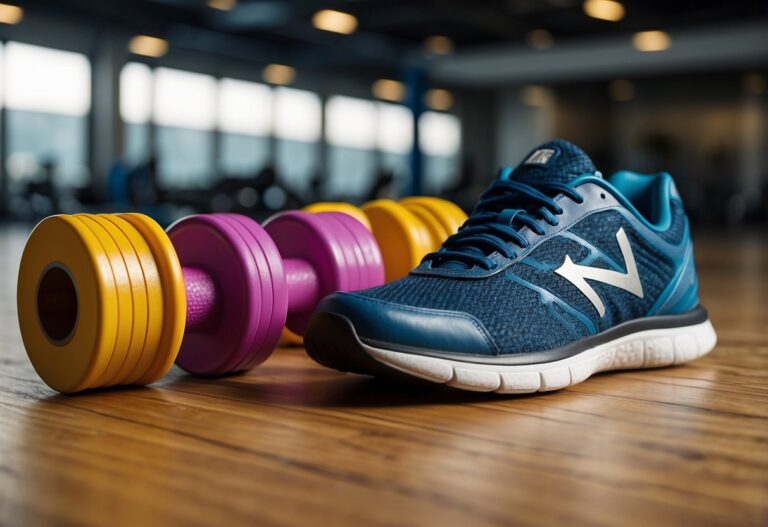Staying safe while exercising is crucial for maintaining good health and avoiding injuries. You might be excited to jump into your workout routine, but it’s important to remember that taking the right precautions can make a big difference in your fitness journey.

By following some basic workout safety tips, you can prevent common mishaps and ensure each session brings you one step closer to your goals. Whether you’re a beginner or an experienced athlete, understanding how to protect yourself during workouts is essential.
Warm Up Properly
Before starting any workout, it’s important to warm up properly. This helps prevent injuries and gets your body ready for exercise.
One easy warm-up is to march on the spot for three minutes. This can be as simple as marching forward and back while pumping your arms. Keep your elbows bent and your fists soft.
If you’re planning to lift weights, do some lighter reps first. For example, if you usually do push-ups from the floor, try doing them against a countertop to start. This way, your muscles get used to the movement without too much strain.
Make sure to engage your core. Try standing with your hands next to your ears and your back against a wall. Slowly move your arms up and down while keeping them in contact with the wall. This helps activate your muscles gently.
By taking just a few minutes to warm up, you can make your workout safer and more effective. For more detailed tips, visit NHS.
Stay Hydrated
Staying hydrated is crucial during workouts. Water helps regulate your body temperature and keep your muscles and joints working properly.
Drink regularly. Keep a reusable water bottle with you to remind you to stay hydrated throughout the day. Aim to drink about 450ml of water two to four hours before exercising.
During your workout, take small sips of water every 10-20 minutes. This helps maintain your hydration levels and supports your performance. Don’t wait until you feel thirsty; thirst often means you’re already dehydrated.
Post-exercise, drink 8 oz. of water within 30 minutes. Replenishing fluids lost through sweat is essential for recovery.
In hot weather, hydration becomes even more important. Exercise in cooler parts of the day and listen to your body. If you feel dizzy or too hot, take a break and hydrate immediately.
Using these tips, you can keep your body well-hydrated and ready for action.
Use Correct Form
Using correct form is key to staying safe while working out. Bad form can lead to injuries and set you back. Always make sure you breathe properly. Breathe out as you lift or push, and breathe in as you lower the weight. Never hold your breath.
Engage your core muscles during exercises. This helps stabilise your body and prevents strain on your back. For more on proper breathing techniques and muscle engagement, check out these weight training tips.
If possible, learn from a professional. Getting tips from someone who knows what they’re doing, like a trainer, can make a huge difference. Whether you’re new to the gym or experienced, proper form is crucial.
Wear Appropriate Gear

When working out, wearing the right gear is crucial for your safety. First, choose comfortable clothing that allows you to move freely. Clothes that are too tight or loose can cause discomfort or even accidents.
Invest in good quality trainers that provide proper support for your feet. The right trainers can prevent injuries like sprains and strains.
Consider the weather conditions. For instance, if you’re exercising in cold weather, wear multiple layers to keep warm. If it’s hot, select breathable fabrics to help cool you down.
Using the right protective equipment like knee pads, helmets, or wrist guards is important for activities like cycling or skateboarding. These items can prevent serious injuries.
Don’t forget about hydration packs or easy-to-carry water bottles. Staying hydrated is key to maintaining your performance and safety.
Check out this all-in-one guide to gym wear for more detailed advice on selecting the best gear for your workouts.
Don’t Skip Stretching
You might wonder if stretching is really important. Well, it is! Stretching can prevent injuries, keep your muscles flexible, and improve your overall performance in workouts.
Before jumping into intense activities, start with some dynamic stretches. These movements, like leg swings or arm circles, prepare your muscles for exercise.
After your workout, focus on static stretching. Holding each stretch for 30 to 60 seconds can help your muscles recover. For example, try standing calf raises to ease calf tension.
Remember, never stretch first thing in the morning, especially if you have a low back injury. Your spine is more vulnerable right after waking up.
Listen to Your Body
Listening to your body is crucial during workouts. This means paying attention to how you feel physically and emotionally.
Start by recognising basic signals. If you feel pain or discomfort, stop and reassess. Don’t ignore signs of fatigue or dizziness.
Take note of how your body reacts after each session. Adjust your workout intensity based on how you feel. If you experience excessive soreness, it might be time to take it easy.
Prioritise rest when needed. Embrace rest days without feeling guilty. It’s okay to take a break if your body is telling you to.
Remember, listening to your body helps prevent injuries and ensures long-term fitness. Make this practice a regular part of your routine. You can read more about it on Peloton’s guide.
Avoid Overtraining
Overtraining can be a real setback in your fitness journey. You might think pushing harder will speed up results, but it’s important to listen to your body instead.
Pay attention to signs like constant fatigue, plateauing progress, and heavy, sore muscles. These could indicate you’re overdoing it.
Make sure to prioritise rest and recovery days in your routine. Your muscles need time to heal to grow stronger.
Cross-training can help too. Mix up your workouts to avoid stressing the same muscle groups repeatedly. It keeps things interesting and reduces injury risk.
Consider hiring a coach or trainer. Having professional guidance can ensure you’re not overtraining and are following a balanced plan.
Remember, your body needs proper rest to perform at its best. Adjusting your training plan to include these tips can help you stay on track and avoid burnout.
Understand Equipment Usage
Using gym equipment properly is key to a safe and effective workout. Before starting, always read the instructions provided on the machine. Knowing the right way to adjust settings, such as the seat height on a stationary bike, can prevent injuries.
Pay attention to your posture. For instance, when using the leg press, keep your back flat against the seat. Incorrect posture can lead to strain and injury. Adjust the machine to fit your body size.
Seek guidance if you’re unsure. Many gyms offer a free introduction to equipment usage with a trainer. Taking advantage of this can greatly improve your workout safety.
Have a Spotter
Having a spotter during weightlifting can make your workouts safer. A spotter is there to help you if the weight becomes too much or if your form starts to slip. This is especially important during exercises like bench presses or squats.
Before you begin, communicate clearly with your spotter. Discuss your plan and make sure you both know what to do if something goes wrong. It’s all about teamwork.
Stand close enough to assist, but don’t get in the way. The spotter’s job is to support without taking over. Use an alternated grip when helping with the bar to keep it steady.
Think about how having a spotter can boost your confidence. Knowing someone is there to help allows you to push yourself and try lifting heavier weights.
Take Rest Days
Taking rest days is crucial for your overall fitness routine. Rest days help your muscles repair, rebuild, and strengthen after intense workouts. Skipping rest can lead to injuries and burnout.
Aim to take at least one rest day a week. For some, this may mean complete rest, while others may benefit from active recovery like gentle yoga or a light walk. A rest day allows your body to recharge and can improve performance when you return to regular workouts.
If you’re recovering from an injury or illness, you may need more rest days. Listen to your body and give it the time it needs to heal properly. This ensures you come back stronger and healthier.
For more tips on the benefits of rest, you can check out this article on Verywell Fit. Remember, taking care of your body includes knowing when to take a break.
Understanding Proper Form
Proper form is essential to maximise the benefits of your workout and to prevent injuries. By focusing on techniques and avoiding common mistakes, you can improve your performance and safety.
Importance of Form
Proper form in exercise ensures that you target the right muscles and reduce the risk of injury. When movements are performed correctly, muscles and joints work in harmony. This not only optimises your workout but also helps you progress faster towards your fitness goals.
Using correct form also prevents strain on non-targeted areas such as your lower back or knees, which are often vulnerable to injury. For example, maintaining a straight back during squats helps engage the core and protects the spine. Breathing correctly – exhaling during exertion and inhaling during relaxation – also contributes to a safer and more effective workout.
Common Form Mistakes
One of the most common mistakes is lifting weights that are too heavy. This often leads to poor form because the focus shifts from technique to simply moving the weight. For instance, arching your back while performing a deadlift to lift heavier weight can seriously injure your spine.
Another frequent mistake is improper knee alignment during exercises like squats and lunges. Your knees should align with your toes to avoid stress on joints. Additionally, holding your breath while lifting can lead to increased blood pressure and dizziness.
Rushing through exercises is another error, as it often compromises form for speed, leading to a higher risk of muscle strain or injury. It’s critical to perform each movement slowly and deliberately, focusing on control.
Techniques for Correct Form
To practise proper form, consider starting with lower weights to master the movements first. Engage a mirror or film yourself to visually check your body alignment. For instance, during a bicep curl, keep your elbows close to your torso and avoid swinging your arm.
Taking a class or working with a certified instructor can provide personalised feedback and help you refine your technique. Investing time in warm-up routines and flexibility exercises can also support proper form by preparing your muscles for more intense activity.
Breathing properly is also essential; remember to exhale during the effort phase and inhale during the release phase. This helps maintain stability and reduces the risk of strain.
Warm-Up and Cool-Down
Warming up before exercise and cooling down afterward are crucial for a safe and effective workout. They help prepare your body for physical activity and reduce the risk of injury.
Benefits of Warming Up
Warming up is essential because it prepares your body for more intense exercise. It increases blood flow to your muscles, boosting their temperature and making them more flexible. This makes muscle strains and sprains less likely.
Warming up also gradually raises your heart rate, which helps to minimise stress on your heart when you begin more strenuous activity. You will notice an improvement in your performance as your muscles become more pliable, and your body and mind become more alert.
Effective Warm-Up Exercises
Engaging in simple exercises is the best way to start. Light jogging or brisk walking for 5-10 minutes helps to get your blood flowing and muscles warmed up.
Dynamic stretches, such as leg swings, arm circles, and lunges, are very effective. These stretches use movement to extend your muscles and joints, preparing them for exercise. You can also incorporate movements specific to your workout. For example, if you’re planning to run, doing some high-knees or butt kicks can be very beneficial.
Cooling Down for Injury Prevention
Cooling down is equally essential to help your body return to its normal state. It avoids sudden drops in blood pressure and reduces muscle stiffness and soreness. After your main workout, reduce your intensity slowly. For instance, after a run, you can transition to a brisk walk for 5-10 minutes.
Stretching is crucial during the cool-down phase. Focus on your major muscle groups like quads, hamstrings, and calves. Hold each stretch for 20-30 seconds to help release muscle tension. Adding some deep breathing exercises can also help calm your mind and encourage relaxation. Cooling down helps your body recover more quickly and prepares you for your next workout.
By paying attention to warming up and cooling down, you can exercise more effectively and reduce your risk of injury. These simple steps are an important part of a safe fitness routine.
Using Equipment Safely
In this section, you’ll learn about selecting the right workout gear, maintaining your equipment, and essential tips for using gym machines safely. These practices help you avoid injuries and make your workouts more effective.
Choosing the Right Equipment
Picking the right equipment for your fitness level and goals is crucial. Whether you’re working out at home or at the gym, ensure that the machines fit your needs. For instance, if you have joint issues, an exercise bike can be ideal because it provides a low-impact workout. Always choose equipment that you are comfortable with and that suits your physical condition.
You should also consider the adjustability of the equipment. Many machines have settings to adapt to different body sizes and strengths. This helps in preventing strain and injuries. Make sure to adjust the seat height or the resistance level before starting your workout. Proper adjustment ensures that your body is in the correct posture, which minimises the risk of harm and maximises the efficiency of your exercise.
Lastly, you might want to consult with a trainer or do some research before buying or using new equipment. Understanding what you need and what each piece of equipment offers can save you from unnecessary injuries.
Proper Equipment Maintenance
Maintaining your equipment is important to ensure safety and longevity. Regularly inspect the machines for any signs of wear or damage. Torn cables or loose nuts could cause accidents. Make it a habit to check these parts before each use. If you notice any issues, get them repaired immediately.
Keep the equipment clean. Sweat and dust can lead to slips or equipment malfunctions. Wipe down machines after each use, and give them a thorough clean weekly. Follow the manufacturer’s instructions for cleaning and maintenance to avoid damaging the equipment.
Also, pay attention to the user manual. Equipment often comes with specific guidelines on how to maintain it properly. Following these tips will help you avoid unnecessary risks and extend the life of your gear.
Safety Tips for Gym Machines
Using gym machines correctly is essential for preventing injuries. First, always warm up before starting any exercise. Warming up prepares your muscles and joints for the strain of the workout. Spend about five to ten minutes doing light activities like walking or stretching before you hit the machines.
Adjust the machines to fit your body. Improper adjustments can lead to injuries. Make sure your seat is at the right height, and the handles or pedals are within comfortable reach. Incorrect posture can strain your muscles and joints.
Listen to your body. If something feels off, stop and reassess. Don’t push through pain, as it could lead to serious injuries. Hydrate and take breaks as needed. Neglecting these can cause fatigue and increase the risk of accidents.
Finally, always follow the instructions for each machine. If you’re unsure how to use a piece of equipment, ask a trainer for help. Never assume you know how to operate a machine just by looking at it. Taking these precautions will help you stay safe and make the most of your workout.


